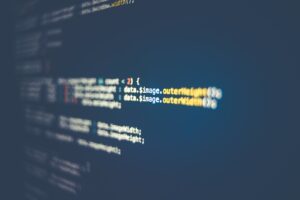Balancing Accuracy and Generalization in AI Models
Understanding the Importance of Reducing Overfitting in Convolutional Neural Networks
In the world of artificial intelligence, the challenge of reducing overfitting in convolutional neural networks is a critical concern, particularly for businesses in Saudi Arabia and the UAE where AI-driven innovation is rapidly becoming a cornerstone of economic success. Overfitting occurs when a model is trained too well on its training data, to the point where it performs poorly on unseen data. This is a significant issue for companies relying on AI for decision-making, as it can lead to models that do not generalize well to real-world scenarios. For business executives and entrepreneurs in regions like Riyadh and Dubai, where precision in AI applications is crucial, understanding how to mitigate overfitting without sacrificing accuracy is key to maintaining a competitive edge.
One effective strategy for reducing overfitting in convolutional neural networks involves implementing regularization techniques. Regularization methods such as L2 regularization or dropout can help prevent the model from becoming too complex and overfitting the training data. L2 regularization, also known as weight decay, adds a penalty to the loss function for large weights, encouraging the model to find simpler solutions. Dropout, on the other hand, randomly “drops out” neurons during training, forcing the network to learn more robust features that generalize better to new data. These techniques are particularly useful in sectors like finance and healthcare, where AI models need to be both accurate and reliable to ensure effective decision-making.
In the context of Saudi Arabia and the UAE, where AI is being integrated into various industries at a rapid pace, the ability to manage and reduce overfitting in convolutional neural networks is crucial for long-term success. By adopting these regularization techniques, businesses can develop AI models that not only perform well on training data but also deliver consistent and accurate results in real-world applications. This balance between accuracy and generalization is essential for maintaining the trust of clients and stakeholders, and for ensuring that AI-driven innovations contribute positively to business growth and success in these dynamic markets.
Advanced Strategies for Reducing Overfitting While Preserving Model Accuracy
As AI continues to evolve, more advanced strategies for reducing overfitting in convolutional neural networks are being developed, offering businesses in Saudi Arabia and the UAE even greater control over their AI models. One such strategy involves the use of data augmentation techniques. Data augmentation artificially increases the diversity of the training dataset by applying random transformations, such as rotations, flips, and shifts, to the input data. This process helps the model become more resilient to variations in the data and reduces the likelihood of overfitting. In industries like retail and e-commerce, where customer behavior data is highly variable, data augmentation can significantly improve the robustness of AI models, leading to better predictions and enhanced customer experiences.
Another powerful approach to reducing overfitting in convolutional neural networks is the use of early stopping during training. Early stopping monitors the model’s performance on a validation dataset and halts training when the performance stops improving, thereby preventing the model from overfitting the training data. This technique ensures that the model maintains a good balance between underfitting and overfitting, achieving optimal accuracy without compromising its ability to generalize. For project management and executive coaching services in Riyadh and Dubai, where AI tools are increasingly used to analyze data and provide insights, early stopping helps ensure that the AI models deliver reliable and actionable recommendations.
Lastly, transfer learning offers another effective strategy for reducing overfitting in convolutional neural networks without sacrificing accuracy. Transfer learning allows a pre-trained model, which has already learned from a large dataset, to be fine-tuned on a smaller, domain-specific dataset. This approach leverages the knowledge acquired from the larger dataset to improve the performance of the model on the new task, reducing the risk of overfitting. In sectors like real estate and construction, where data may be limited or highly specialized, transfer learning enables businesses to develop high-performing AI models without the need for extensive retraining. This not only saves time and resources but also ensures that AI solutions remain accurate and effective in meeting business goals.
#AI, #ConvolutionalNeuralNetworks, #ReducingOverfitting, #BusinessInnovation, #LeadershipInAI, #SaudiArabiaTech, #UAEInnovation, #ExecutiveCoaching, #ProjectManagement, #Riyadh, #Dubai













